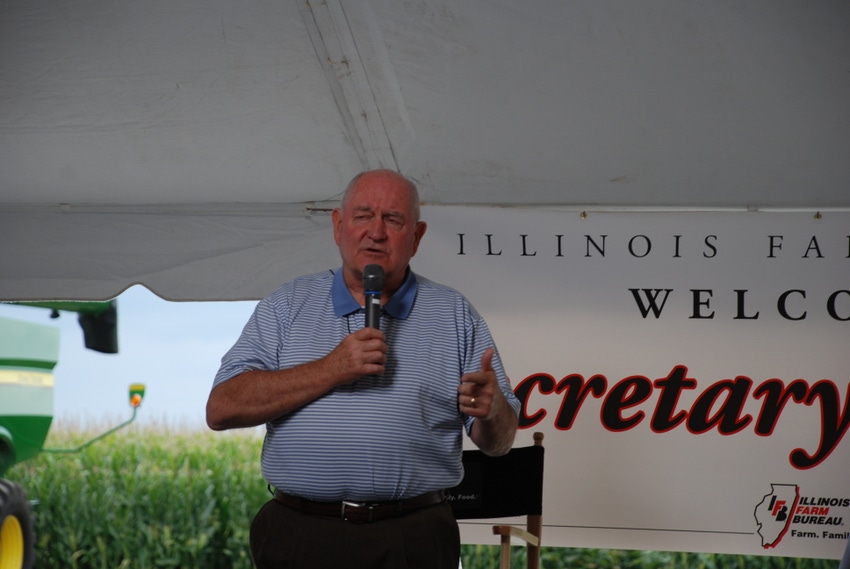Perdue warns the budget is the biggest challenge for the USDA. So, finding $150 million annually for foreign animal disease preparedness could be difficult.
August 10, 2017

An annual outlay of $150 million for a foot-and-mouth disease vaccine bank in the next farm bill is a big ask from livestock producers. However, the amount is a drop in the bucket to the comparable $20 billion yearly cost of an outbreak in the United States to the beef, pork, corn and soybean sectors alone.
Budget, in general, is the biggest challenge for the U.S. Secretary of Agriculture Sonny Perdue. In May, President Donald Trump announced a deep cut of 21% to the USDA budget. Perdue has received his marching orders, and he knows the USDA must run efficiently on fewer dollars. Therefore, large appropriation numbers in the 2018 farm bill can be subjected to slashing. Perdue says, speaking in Illinois during his “Back to Our Roots” R.V. tour, “We must do more with less.”
The United States is not prepared for an FMD outbreak, yet one case can stop U.S. export markets on a dime and cripple the entire agriculture sector. While the United States has not had an FMD outbreak since 1929, the recent global epidemic is a harsh reminder that a foreign animal disease can happen at any time.
According to Iowa State University economists, an FMD outbreak in the United States, which would prompt countries to close their markets to U.S. meat exports and create a surplus of meat on the domestic market, would cost the beef and pork industries a combined $128 billion over 10 years if livestock producers weren’t able to combat the disease through vaccination. The corn and soybean industries would lose $44 billion and $25 billion, respectively, over a decade; and economy-wide job losses would top 1.5 million.
Bobby Acord, retired administrator for USDA’s Animal and Plant Health Inspection Service, says past FMD outbreaks in foreign countries demonstrate that the strategy of just stamping out infected animals under the World Organization for Animal Health guidelines is impractical. A vaccination and strict movement control halted the spread of FMD quickly for Japan and South Korea in 2010-11.
Currently, the United States only has access to enough vaccine to inoculate livestock in just one county in Iowa. Access to FMD vaccination and the strategy to control an outbreak needs to be adjusted which is why livestock producers are joining together and making it a priority to get the United States FMD ready.
During the listening session, Illinois pork producer and president of the Illinois Pork Producers Association Jason Propst stresses the importance of funding a robust FMD vaccine bank and new language directing the USDA to develop a contract relationship with offshore vendors.
Although Perdue fully understands the necessity of being prepared, he is cautious about the price tag. “I am with you; just do not get hung up on $150 million. I am going to try to find the money like $25 million a year or something like that. I know we can do it with less,” says Perdue.
Yet, $150 million annually for five years is not just an arbitrary figure, but carefully calculated from a team at ISU.
“Currently today, we have enough antigens on hand that we can take care of one highly dense livestock county in Iowa or North Carolina. So, if something happens we are in trouble,” states Propst. “We know we have to vaccinate our way out of an outbreak if it were ever to happen. We are looking at what it takes to get the bank up to a useable stage.”
While Secretary Perdue and the USDA team are heavily involved in developing the farm bill, it is ultimately Congress’ job. Organizations from pork, cattle and sheep industry urge Congress to authorize annual funding in the five-year farm bill of $150 million for the vaccine bank, of $30 million for the National Animal Health Laboratory Network and of $70 million, in block grants, for state animal health agencies to enhance their ability to respond to a foreign animal disease emergency.
You May Also Like



